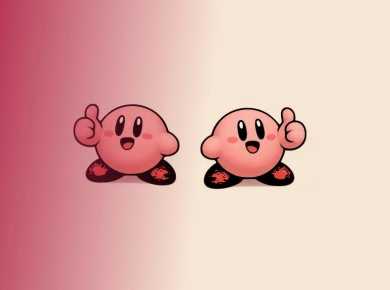Ketamine therapy has become a topic of heated discussion in recent years, often surrounded by a haze of myths and misconceptions. As a treatment for depression and other mental health issues, ketamine’s reputation has been colored by its history as an anesthetic and its street use as a recreational drug. Many people wonder: does ketamine therapy get you high? To answer this question, it’s essential to delve into the science behind ketamine, its therapeutic applications, and how it differs from its illicit use. Let’s separate fact from fiction and explore the medical reality of ketamine therapy.
The Origins of Ketamine
Ketamine was initially developed in the 1960s as a fast-acting anesthetic. Its unique properties quickly made it a staple in surgical settings, particularly in emergency medicine. However, its use didn’t stop there. Over the decades, researchers began to explore ketamine’s effects on mood and mental health, leading to its emergence as a potential treatment for depression, PTSD, anxiety, and other mood disorders.
While ketamine is effective in clinical settings, understanding its pharmacological effects is crucial. When used inappropriately, ketamine can induce dissociative states, hallucinations, and a feeling of detachment from reality. This led to its recreational use, where people sought the drug for its euphoric and mind-altering effects.
What Happens During Ketamine Therapy?
In a medical context, ketamine therapy involves carefully controlled doses administered under professional supervision. Typically, it is delivered via intravenous infusion, intranasal spray, or intramuscular injection. The dosage and setting are tailored to the individual, ensuring a safe and therapeutic experience.
Patients undergoing this treatment often report feeling a profound sense of relaxation and calmness. Some describe their experiences as surreal or dreamlike, but these effects are not the same as getting high. Instead, the goal is to facilitate a therapeutic breakthrough, particularly for those who haven’t responded to traditional antidepressants.
The Therapeutic Effects
During a ketamine session, the drug interacts with the brain’s NMDA receptors, which play a significant role in mood regulation and synaptic plasticity. This interaction can lead to rapid changes in mood and perception. Many patients note improvements in their mental state within hours, a stark contrast to the weeks or months it may take for conventional antidepressants to take effect.
It’s also worth noting that the experiences during ketamine therapy can vary widely among patients. Some may feel euphoric, while others report a more neutral or even somber experience. This variability highlights that ketamine therapy is not about achieving a high, but rather about undergoing a transformative mental health experience.
Myths Surrounding Ketamine Therapy
One of the most prevalent myths surrounding ketamine therapy is that it is merely a shortcut to getting high. This misconception can deter individuals from seeking treatment or contribute to the stigma associated with its use. Let’s address some of the common myths head-on:
Myth 1: Ketamine Therapy is Just Like Recreational Use
While both recreational and therapeutic uses of ketamine involve the same substance, the context, dosage, and intent are fundamentally different. Recreational use often involves higher doses taken without medical supervision, leading to disorienting and potentially dangerous experiences. In contrast, ketamine therapy is conducted in a safe environment, with medical professionals monitoring the patient’s response.
Myth 2: Ketamine is Addictive
Concerns about addiction are valid but often exaggerated in the context of ketamine therapy. Studies show that when used responsibly and under supervision, the risk of addiction is low. In fact, ketamine therapy can help people break free from the cycle of dependence on other substances, especially when traditional treatments have failed.
Myth 3: Ketamine Therapy is a Quick Fix
Some people may assume that a few sessions of ketamine therapy will cure their mental health issues. While many patients experience rapid relief, it is not a permanent solution. Ongoing therapy, lifestyle changes, and possibly continued treatment may be necessary to maintain improvements.
The Science of Ketamine and Mental Health
Understanding the scientific basis for ketamine’s effects on mental health can help demystify its use. Research indicates that ketamine promotes neurogenesis, the process of creating new neurons, particularly in the hippocampus, an area of the brain involved in mood regulation. This neuroplasticity is crucial for healing from mental health conditions, allowing individuals to form new patterns of thinking and behavior.
Additionally, ketamine’s rapid action distinguishes it from traditional antidepressants, which often take weeks to show effects. This characteristic makes ketamine an appealing option for those in crisis or at risk of self-harm.
Patient Experiences
Many individuals who have undergone ketamine therapy share transformative experiences. For some, the sessions have led to a newfound clarity and emotional release. Others describe experiencing insights into their mental health struggles that they had never considered before. These experiences can facilitate deeper therapy, allowing individuals to engage more meaningfully in their recovery process.
However, it’s essential to approach these sessions with an open mind. The experience can be unpredictable, and not every session will yield the same results. This unpredictability can be daunting, but it also reflects the complex nature of mental health treatment.
Potential Side Effects of Ketamine Therapy
While ketamine therapy presents promising benefits, it is not without potential side effects. Some patients experience temporary dissociation, dizziness, or nausea during or following treatment. These effects are often mild and subside relatively quickly, especially when compared to the debilitating symptoms of severe depression or anxiety.
However, it is crucial for patients to discuss any pre-existing conditions with their healthcare provider. Certain medical histories may require additional consideration when determining the appropriateness of ketamine therapy.
Future Perspectives: Ketamine and Mental Health
As research continues to unfold, the future of ketamine therapy in mental health treatment appears bright. Ongoing studies are exploring its efficacy in treating a range of conditions, from chronic pain to substance use disorders. Additionally, the development of other rapid-acting antidepressants is on the horizon, inspired by ketamine’s unique properties.
The conversation around ketamine therapy is evolving, and with it, the understanding of mental health treatment as a whole. The stigma that surrounds the drug’s past may eventually give way to a more nuanced view, recognizing its potential as a legitimate therapeutic option.
Conclusion: The Reality of Ketamine Therapy
So, does ketamine therapy get you high? In a recreational sense, no—it is not about seeking a high but rather about seeking healing. It offers hope for those struggling with mental health issues, providing a pathway to recovery that many have found elusive.
As we continue to unravel the complexities of mental health and treatment options, it’s essential to approach ketamine therapy with informed perspectives. The myths surrounding it can cloud judgment, but understanding the science and experiences behind the therapy can empower individuals to make educated decisions about their mental health journey.
In conclusion, ketamine therapy represents a significant advancement in our approach to mental health. The juxtaposition of its medical use and recreational history can complicate perceptions, but with proper understanding and guidance, it holds the potential to change lives for the better. If you or someone you know is considering this treatment, seeking a knowledgeable healthcare provider is crucial to ensure a safe and effective experience.




